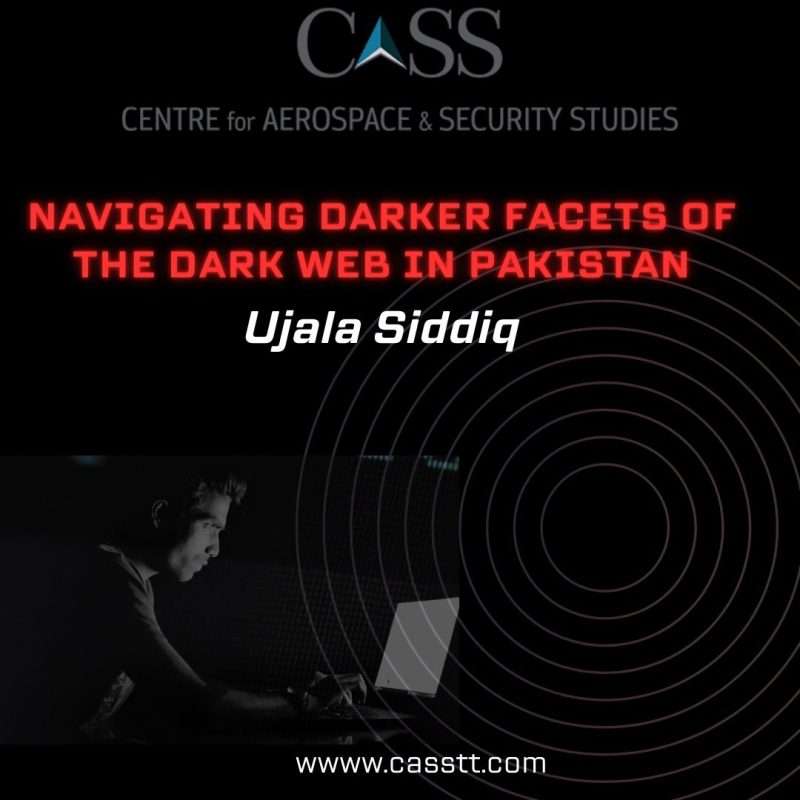The Dark Web is a relatively minor yet integral portion of the Deep Web, a realm within the Internet that is not easily accessible through conventional search engines like Google, etc. Coined by Computer Scientist Michael K. Bergman in 2001, the term ‘Deep Web’ was introduced to differentiate it from the ‘surface internet’. The Deep Web encompasses data that is not readily viewable or retrievable and constitutes only a fraction of its size, approximately 500 times smaller. However, the Dark Web has unindexed websites with encrypted content and hidden IP addresses. Its accessibility requires special networks, directories, and software such as The Onion Router (Tor) that utilise multiple nodes to re-route connections, allowing individuals to browse content on the Dark Web discreetly. Although the Dark Web is instrumental in safeguarding the privacy of journalists, lawyers, and dissidents, its frequent links to criminal and illicit undertakings often overshadow its positive intent. In fact, it is often seen as a haven for the darkest online activities and used for illicit trade by hackers, terrorists, assassins, and distributors of pornography and sexual abuse.
Within these concerning activities, the Dark Web has notoriously become a platform for disseminating explicit and detrimental material, encompassing adult pornography as well as deeply unsettling instances involving child abuse. The abuse encompasses various facets that remain not limited to the distribution of abusive content but also include trafficking, exploitation, and commercialisation. Malicious actors aim to profit from this material without facing immediate repercussions. According to one estimate, nearly 7.5% of child abuse material has been sold for a profit. Apart from cohascialisation, another significant factor for increasing use of the Dark Web is the ability to operate with a significant level of anonymity, encryption, and decentralised nature which have facilitated the growth of a link between the Dark Web and sexual abuse. According to a global report of Weprotect in May 2021, the number of registered members of the Dark Web were 400,000 whereas, it has been estimated that in 2023, the Dark Web has had 2.5 million daily active users. This dramatic increase is alarming.
As discussed, the Dark Web is widely used for the promotion and commercialisation of pornography and child abuse across the world; and Pakistan is no different in this regard. Reported cases of rape and child abuse have been increasing manifold in the country. According to the latest estimates, cases of child abuse increased by 33% in 2022 as compared to 2021. 4,253 cases of child abuse were reported in all provinces of Pakistan, including Islamabad Capital Territory (ICT), Azad Jammu and Kashmir (AJK), and Gilgit-Baltistan (GB) in 2022. In the first five months of 2023 alone, nearly 1,390 child abuse cases were reported in Punjab. Tragically, these estimates are of reported cases only, a great many remain unreported.
There are myriad factors contributing to the alarming rise in rape and child abuse cases in Pakistan, from issues of evidence and accountability to more sinister motivations. One significant driver is the commercial and monetary allure of selling child pornography. Such heinous acts, which include mutilation, burns, torture, and rape, mirror the content frequently found on the Dark Web.
Drawing attention to this link, child abuse videos sold in Pakistan’s Kasur region have suspected ties to the Dark Web’s commercial networks. This suspicion is not unfounded. A recent police operation in the Taxila region resulted in the apprehension of a gang involved in disseminating child pornography via the Dark Web. This arrest underscores a sad reality: organised crime syndicates are capitalising on the Dark Web as a secure platform to circulate illicit content, further endangering vulnerable children. Moreover, a disturbing case at the Islamia University of Bahawalpur (IUB) where students were sexually abused could have ties to the Dark Web’s financial ecosystem. This incident serves as a chilling reminder of how deeply intertwined offline crimes can be with the clandestine digital underworld.
Thus, Law Enforcement Agencies (LEAs), the broader community, and the civil society in Pakistan need to be wary of the nexus between sexual abuse and the Dark Web. Civil society and media can play a crucial role in tackling these challenges. They can make a significant impact by educating the general public, parents, and educators about the Dark Web and its role in facilitating child abuse. This awareness may help individuals to recognise and report such suspicious activities. By harnessing insights from various societal sectors and collaborating with cyber experts, LEAs can effectively amass substantial evidence when investigating Dark Web-related cases. Authorities need to carefully investigate these crimes, track their online footprints, and crack down on such gangs working in Pakistan. LEAs, cyber security experts, and ethical hackers can work together to identify and dismantle networks involved in distributing illegal content, especially those related to pornography and sexual abuse. Furthermore, raising awareness and promoting digital literacy are vital components in preventing vulnerable individuals from falling victim to the traps laid out by those exploiting the Dark Web for their malicious purposes.
Ujala Siddiq is a Research Assistant at the Centre for Aerospace & Security Studies (CASS), Islamabad, Pakistan. She can be reached at cass.thinkers@casstt.com
Design Credit: Mysha Dua Salman




